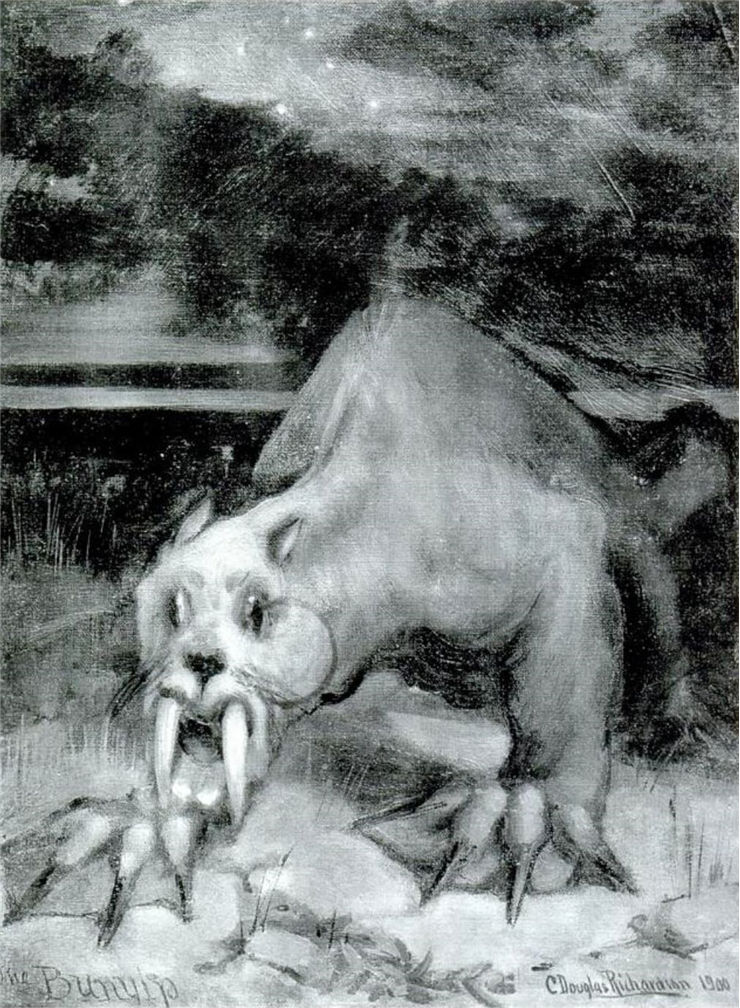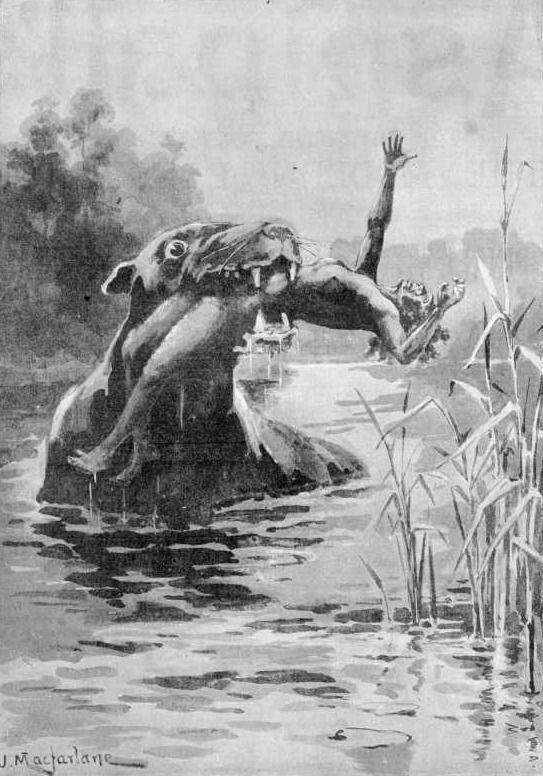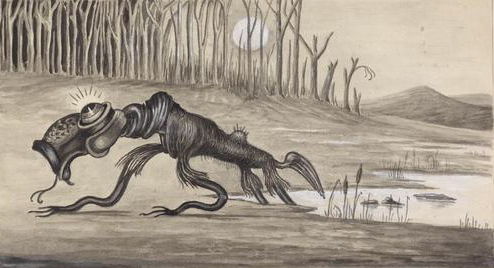Bunyip - Legendary Mythical Creature from Riverbeds
In Australian Aboriginal stories and myths, the bunyip is a creature that lurks in swamps, creeks, waterholes, billabongs and riverbeds. There are different versions of the bunyip, at least nine of them, in various parts of Aboriginal Australia. Name bunyip is probably from Wemba-Wemba or Wergaia language although it has variations from tribe to tribe. First written evidence about Bunyip was from the 19th century, and those were written by European settlers. It is said that bunyip’s victims are usually women because they are more defenseless.
In the language of Aboriginal Australians, the word bunyip can be translated today as “evil spirit” or “devil” but those translations are not entirely accurate. Other sources say that there may be some connection between word bunyip and word Bunjil which is "a mythic 'Great Man' who made the mountains and rivers and man and all the animals." By the middle of 19th-century-word bunyip have meanings like a pretender, impostor, and humbug. In modern days it was used by Prime Minister Paul Keating to describe members of conservative Liberal Party of Australia.
A lot of people have tried to explain what the bunyip is. Robert Brough Smyth wrote in his book Aborigines of Victoria which is published in 1878 that little is known about Bunyip and its characteristics. George French Angus said that Moorundi people of the Murray River are frightened of it and have some difficulties describing it. Many of the descriptions from 19th century usually said that bunyip has dark fur, flippers, dog-like face, a crocodile-like head, a horse-like tail, and walrus-like. It is said that bunyip lay eggs in a nest in a similar way like a turtle does. According to Charles Fenner’s writings in 1933, stories and myths about bunyips originated from the fact that a lot of seals came up the river all the way to Overland Corner, Loxton, and Conargo confusing aboriginal people into thinking that they are something else. There are some opinions, like that of Dr. George Bennett of the Australian Museum, that bunyips are just a cultural memory of extinct Australian species like Nototherium, Diprotodon, Palorchestes or Zygomaturus.
People found a skull in Murrumbidgee River near Balranald in New South Wales in 1847 and believed it belonged to Bunyip. They even put it on exhibition in Sydney museum. It was proven later that it war horse or calf skull. Today people of Australia usually don’t believe in the existence of Bunyip and find it purely mythological. However, there are still some who believe in it.
There are a lot of different contexts in which the word bunyip can be heard. There is The Bunyip weekly newspaper in a ton of Gawler in South Australia or the House of Gentle Bunyip in Clifton Hill, Victoria. Throughout the 19th and 20th centuries, there were a numerous tales where the word bunyip was used. Some of them are Andrew Lang's The Brown Fairy Book or Michael Salmon's The Monster That Ate Canberra in which he created a character Alexander Bunyip.


